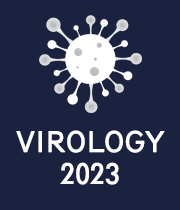Virology 2023 Important Update
This is to inform that Virology 2023 event is now merged with Infection 2023 which will be held on same dates June 21-22, 2023 in Rome, Italy and virtually.
For complete details about the merged event, please visit: https://infectiouscongress.com
For further details, please contact us at infectious@magnusconference.com or call + 1 (702) 988 2320
HYBRID EVENT: You can participate in person at Rome, Italy or Virtually from your home or work.
VIROLOGY 2023
Will be updated soon......
Will be updated soon......

